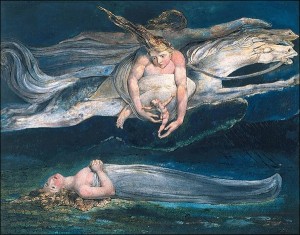All links are to Wikipedia entries.
Government, Politics, and War:
- Famine in England is brought on by bad harvests and a wartime economy.
- Napoleon Bonaparte rises to prominence in France through a series of brilliant military victories in Italy.
- Sweden becomes the first monarchy to recognize the French Republic.
- January 20: French troops enter Amsterdam.
- April: Prince Frederick, Duke of York and Albany, is named Commander-in-Chief of the British Army.
- April 5: Peace of Basel signed between France and Prussia.
- July 22: Second Treaty of Basel is negotiated between the French First Republic and Spain, ending the War of the Pyrenees. Spain cedes its half of the Caribbean island of Hispaniola to France.
- September 16: British forces capture Cape Town from the Netherlands.
- September 28: The Alliance of St Petersburg is formed between Britain, Russia and Austria against France.
- November: William Pitt introduces the infamous “Gagging Acts” or “Two Bills”: the Seditious Meetings Bill forbids large meetings and political lectures, and Treasonable Practices Bill makes it a treasonable offense to incite hatred of the king, his government, or the constitution in speech or writing.
- November 2: Directory Government (the Directoire) is elected in France.

Portrait of Dauphin Louis-Charles of France by Alexander Kucharsky, 1792. (Click on image to see a larger version.)
Society and Social History:
- Methodists secede from the Church of England.
- A tax on hair-powder quickly ends the fashion for powdering hair.
- January 3: Josiah Wedgwood, English potter and prominent abolitionist, dies at age 64.
- April 8: The Prince of Wales marries Caroline of Brunswick.
- June 8: Prince Louis-Charles, son of Louis XVI and Marie Antoinette (known as Louis XVII though he never ruled) dies in the Temple Prison in Paris at age 10 and his body is dumped in a mass grave. His heart is stolen and kept by a royalist physician. When the French government announces his death, many doubt the news, giving rise to apocryphal legends of his escape, and to future claimants to the French throne. However, DNA tests performed in 2000 on the heart confirm that it indeed belonged to Louis.
- September – October: Riots over shortages of bread in many towns across Britain.
- October 29: George III is pelted with stones by an angry mob as the bread riots continue.
Literature, Journalism, and Publishing:
- Matthew Lewis‘ Gothic novel The Monk published.

Pity by William Blake, a monotype print finished in ink and watercolor. (Click on image to see a larger version.)
Art, Architecture, and Design:
- William Blake‘s monotypes Nebuchadnezzar, Newton,The Night of Enitharmon’s Joy and Pity are produced.
- January 3: Ceramicist, manufacturer, and abolitionist Josiah Wedgwood dies at age 64.
Music:
- Joseph Haydn completes the last of his 12 London Symphonies.
- March: Ludwig van Beethoven’s Concerto No. 2 in B flat major for Pianoforte and Orchestra is performed in Vienna, marking his debut as composer and piano virtuoso.
Science and Industry:
- Nicolas-Jacques Conté patents the modern pencil ‘lead’ in France.
Natural History and Exploration:
- National Botanic Gardens in Ireland opened by the Royal Dublin Society.
- December 13: A meteorite falls to earth at Wold Newton, East Riding of Yorkshire, the first to be recognized in modern times.




